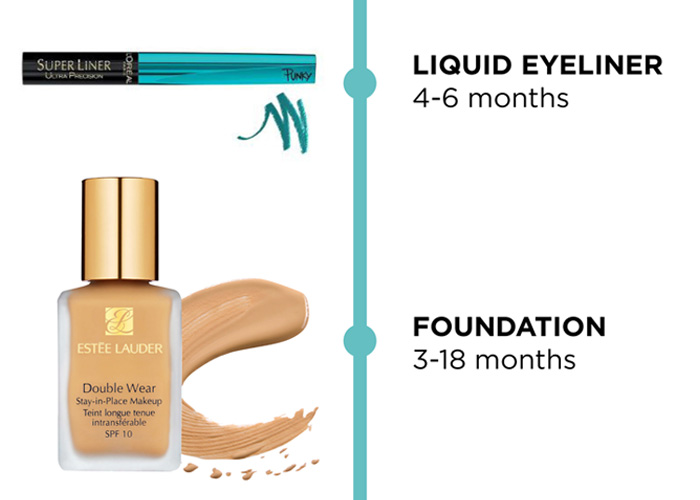Does makeup expire?
Take a look at these 5 mascara options that cost less than R100
We hold onto our makeup far longer than we should, with many of us hoarding eyeshadows and blushers for more than 15 years.
But experts warn that hanging onto expired makeup exposes us to yeast, mould and micro-organisms that cause skin irritation, rashes, conjunctivitis, herpes, ringworm and impetigo. So how can you tell when your makeup has expired?
Follow our simple guide to the expiry dates you should be paying attention to, the tell-tale signs that your makeup is past it, and the nifty ways to make your favourite products last longer.
When does my makeup expire?
First things first, take a look at the box or bottle. Many companies now print expiry dates or period after opening (PAO) symbols on cosmetic products.
See an open jar symbol accompanied by a number and a letter? That’s the number of months or years you have to use it up once you’ve opened it (e.g. 6M = 6 months).
Powder-based products tend to last longer than products with a higher liquid content, since water, oils and hydrating agents facilitate bacterial growth, although oil-based products may last longer than water-based products.
Natural, preservative or paraben-free formulas also tend to have a shorter shelf-life. If you notice a change in colour, consistency or odour, it’s time to chuck it out.
Read on to find out how long you can keep your products.
You can also click here to download our make-up expiration infographic, to keep for future reference
How long can I keep my…
Mascara: 2-6 months
Avoid pumping the wand into the tube. This introduces air, which can facilitate bacterial contamination and make your mascara dry out faster. Note the scent when you open it for the first time. If it goes clumpy or starts to smell funny, bin it immediately.
Liquid eyeliner: 4-6 months
If it dries out, or you notice a change in colour or odour, get rid of it.
Foundation: 3-18 months
Water-based foundations last up to a year, whilst oil-based formulas may keep for up to 18 months. Reduce your foundation’s odds of bacterial contamination by opting for a pump-action bottle or dripping it onto the back of your hand rather than directly onto your fingertips. If it separates into layers or lightens in colour, it’s time to let it go.
Take a look at our flawless foundation favourites
Concealer: up to 1 year
Concealers tend to last a bit longer thanks to their lower liquid content. Tubes tend to be less easily contaminated than pots. Always use a clean brush or fingers, and don’t dab a contaminated brush or finger back in after touching a spot or cold sore.
Lipgloss and lip balm: up to 1 year
Glosses and balms have a shorter shelf life than lipsticks thanks to their liquid content. If you notice a change in colour, texture or consistency (glosses may become stickier with age), it’s expired. As with mascara, avoid pumping the brush into the tube – use a gentle circular motion, instead.
Eyeliner, lip liner and eyebrow pencils: 1-2 years
Regular sharpening will remove bacterial growth from the top layer. If you notice a white spot which sharpening won’t remove, let it go.
Lipstick: up to 2 years
Using a clean lip brush may curb bacterial contamination. If it starts to dry out, chuck it out.
Powder, blush and eyeshadow: up to 2 years
If it becomes dry and flaky or develops a dull grey film, get rid of it.
Nail polish: up to 2 years
Nail varnish gone goopy or separated into layers? A quick shake or a few drops of thinner or nail polish remover might help. If not, bin it.
Perfume: 8-10 years
Look after your favourite fragrance and it could last a decade. Sunlight and bright light cause fragrance to oxidise, so keep it in a cool, dark place, in the original box if you have it. If the scent or colour changes, it’s gone off.
What can I do to extend the makeup expiration date of products?
– Store beauty products in a cool, dry place away from sunlight (which destroys preservatives) and humidity (which promotes bacterial growth).
– At least once a month, wash your makeup brushes and throw out any products missing lids or in broken containers. Don’t leave your brushes to dry on a towel, as this can encourage mildew.
– Lightly clean the top layer of powder products with a cosmetic sanitizer mist every week or two.

